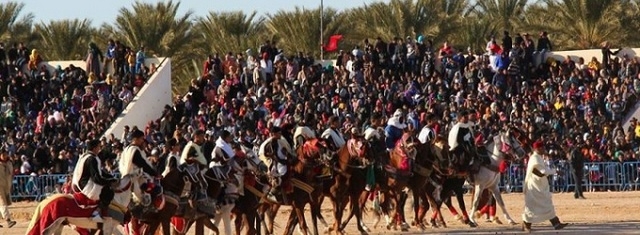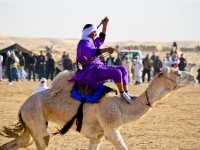Sports
INTERNATIONAL FESTIVAL OF THE SAHARA IN DOUZ, TUNISIA SINCE 1910
TO BE CONFIRMED END OF NOVEMBER 2015

(Source: International Festival Of Sahara)
USPA NEWS -
The Festival, called the Camel Festival, began in 1910 when Tunisia was under French rule. In 1967, it took on its modern identity according to the will of Habib Bourguiba, Tunisia´s first President of the new Republic, to become the country´s oldest and best-known Festival...
The Festival, called the Camel Festival, began in 1910 when Tunisia was under French rule. In 1967, it took on its modern identity according to the will of Habib Bourguiba, Tunisia´s first President of the new Republic, to become the country´s oldest and best-known Festival.
The massive influx of visitors from friendly and sisterly countries might be the greatest proof of the value of the Festival. The committee of the Festival seeks to open new windows on the Arab world and Europe.
The massive influx of visitors from friendly and sisterly countries might be the greatest proof of the value of the Festival. The committee of the Festival seeks to open new windows on the Arab world and Europe.
This is clearly translated in the wide international participation either officially or through the various performances like Douz National Equestrian and Perseverance Race which is organised by the Festival Committee with the cooperation of the National League for the Equestrian Sports.
For four days, the guests of the city enjoy equestrian performances, “Meheri“ (foal) races, “Slougui“ (dog) hunting, camel wrestling and the traditional wedding of Douz as well as the folk music bands coming from the edge of the desert.
For four days, the guests of the city enjoy equestrian performances, “Meheri“ (foal) races, “Slougui“ (dog) hunting, camel wrestling and the traditional wedding of Douz as well as the folk music bands coming from the edge of the desert.
Ruby Bird Yasmina Beddou International Festival Of Sahara Camel Desert People Sport Tunisia Douz Art Culture
Liability for this article lies with the author, who also holds the copyright. Editorial content from USPA may be quoted on other websites as long as the quote comprises no more than 5% of the entire text, is marked as such and the source is named (via hyperlink).






